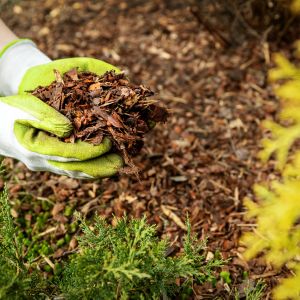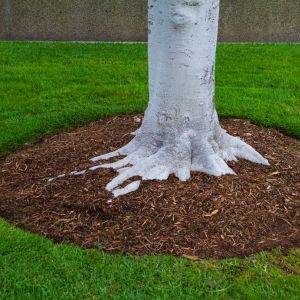In Orchard Park, Western New York, USA, many garden enthusiasts, including my neighbor, take their landscaping projects seriously. Last summer, after years of planning, she meticulously crafted her foundation bed, digging deep and nurturing the soil. Her choice of three barberry trees and a variety of plantings, including silver grass, hostas, and daylilies, added a beautiful touch to her landscape. However, what struck me was the overwhelming amount of mulch she used, which seemed to almost smother her plants.
While I wanted to offer my thoughts on a more curved bed design or the suitability of silver grass for that much shade, I couldn’t bring myself to critique her choices. After all, it’s her garden, her personal oasis. Instead, let’s discuss why mulch might not always be the best choice and explore potential alternatives.
Understanding Tree Mulch

Mulch is undeniably important in gardening, particularly tree mulch. When applied properly, it helps suppress weeds, enriches the soil with organic matter, and allows for efficient water penetration. However, the type of wood mulch you use matters. It’s crucial to avoid cypress mulch, often harvested unsustainably, to ensure responsible environmental practices.
Contrary to what some may believe, wood mulch is beneficial for the soil and doesn’t attract termites. It doesn’t deplete nitrogen from the soil during decomposition; instead, it encourages microbial life, fostering a healthier garden environment.
The Pitfalls of Over-Mulching

My own garden was once overloaded with mulch, a mistake I made before understanding the consequences. Excess mulch can be detrimental to your plants. It’s essential to avoid creating “mulch volcanoes” around trees, where mulch is piled too high on the trunk. This practice can lead to diseases, stem rot, and even tree death. Some trees, like river birch, benefit from a different approach: planting around the root zone to provide shade and cooler soil.
While some studies suggest that mulching around trees can enhance growth over time, it’s essential to consider the extent of a tree’s vegetative roots, which can extend well beyond twice the height of the tree.
Planting as a Natural Alternative
Instead of relying heavily on mulch, consider letting nature take its course. Self-seeding perennials can spread and create a lush garden teeming with life. These plants not only add beauty but also serve as both mulch and a habitat for insects, birds, and other wildlife. Nature’s way involves using short plants to provide a natural mulch layer in your garden.
Over time, as your plants establish themselves, the need for extensive mulching diminishes. The tall, dense growth of established plants naturally shades out most weeds and conserves soil moisture. As a fall top dressing, consider using compost as a dual-purpose mulch and natural fertilizer.
A Low-Maintenance, Beautiful Alternative

In sunny areas, mulch may need annual replenishing due to its quicker breakdown in sunlight. While it may not be as low-maintenance as we desire, it’s still a better choice than rubber mulch, which adds nothing to the soil. A well-planted ground cover and multi-tiered perennial beds can provide an attractive, multi-functional alternative to traditional mulch.
In conclusion, there are various ways to approach mulching in your garden, and it largely depends on your location, soil type, climate, and specific garden requirements. The key is finding the right balance that suits your individual needs and those of your beloved plants. After all, gardening is a journey, and mulch is just one element of that adventure.
For more gardening insights, visit our Services page. We’re here to help you enjoy your gardening experience to the fullest. Happy gardening!

